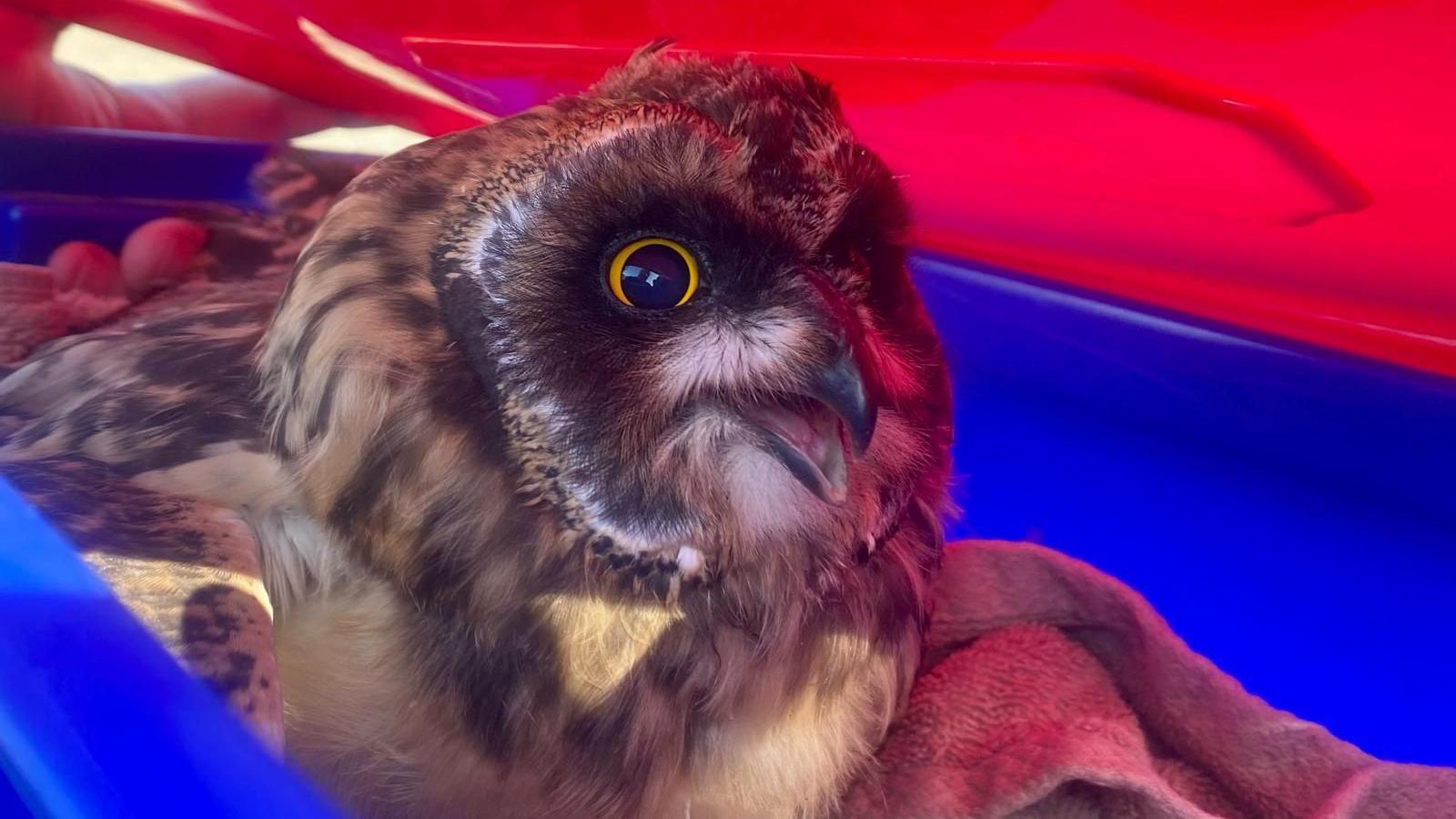Barn owl numbers 'booming' thanks to volunteers
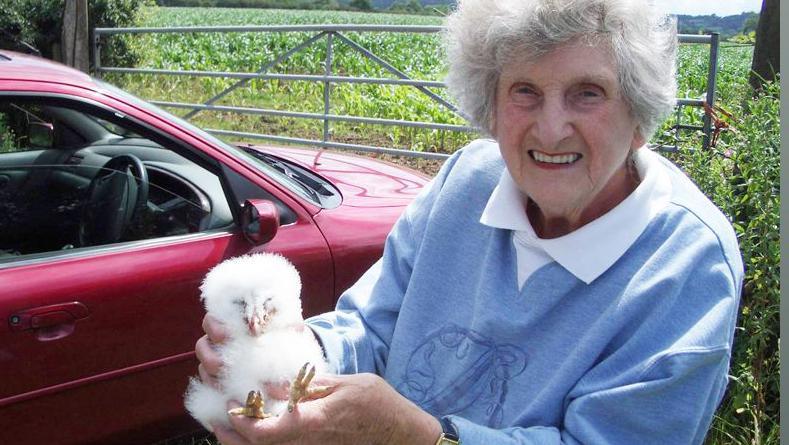
Dot Bramall set up the volunteer group with her husband George in 1995
- Published
A couple who started trying to reverse the falling number of barn owls in part of Cheshire 30 years ago have been remembered for their conservation efforts.
When Dot and George Bramall moved to the area from the Channel Islands they were surprised to find so few barn owls.
A 1994 survey recorded only six breeding pairs in West Cheshire, but after careful conservation measures started by the couple the area now boasts about 160.
"When George and Dot first came here from Guernsey they made this comment of 'where are all the barn owls?' and we did feel that it was personally was our fault," said the RSPB's chairman in Chester, Bernard Wright.
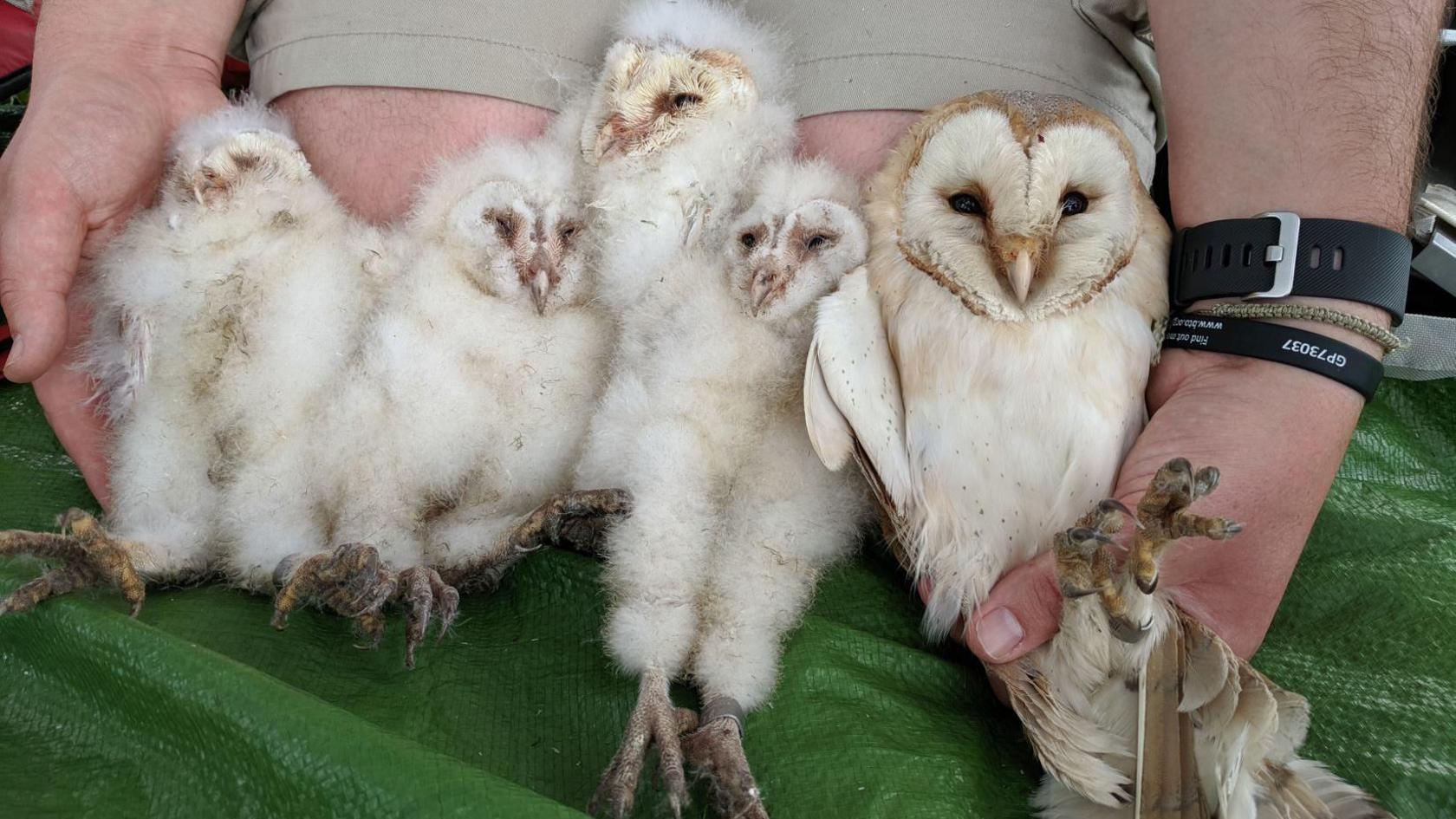
The Broxton Barn Owl Group now estimates there are about 160 breeding pairs in the area
The couple formed the Broxton Barn Owl group in 1995.
The group monitored the species' population and installed specially created boxes on trees and poles to help barn owls raise their young.
"We followed river valleys, to see where wildlife corridors were likely to be and we put up barn owl boxes, and they came," said Mr Wright, one of the group's founding members.
The group went on to work closely with other local conservation and environment groups in the area to raise awareness of threats to habitat and record barn owl sightings.
The Bramalls have both since died but their legacy lives on.
In 2006 there were more than 650 young barns owls that had been born as a direct result of the Broxton Barn Owl group's work.
In 2022 the number of breeding pairs was estimated to be between 160 and 170 - something the volunteers described as "amazing".
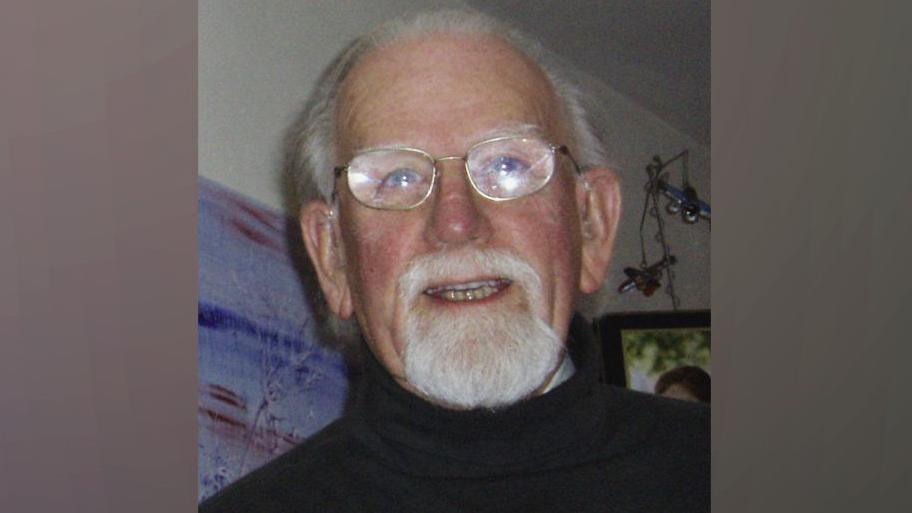
George Bramall helped to survey the number of barn owls in West Cheshire
The group's current chairman, Joe Cooper, said conservation work was ongoing.
He said the number of pairs fluctuates each year and can be influenced by weather changes.
"If there's a very warm or cold snap, a bit of rain in the early season, it can affect whether they have a successful brood or not," he explained.
"These apex predators will do better if there's a good population of smaller animals for them to eat and these rough areas that farmers leave are vitally important to support a whole ecosystem."
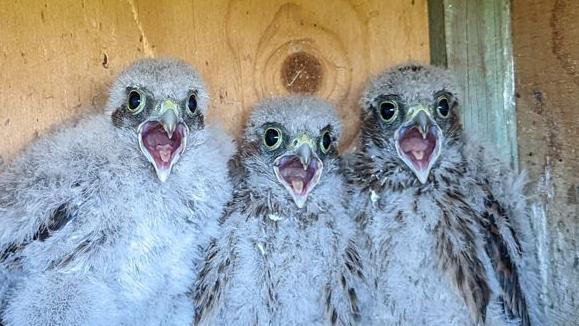
The volunteers also work to conserve other birds including kestrels
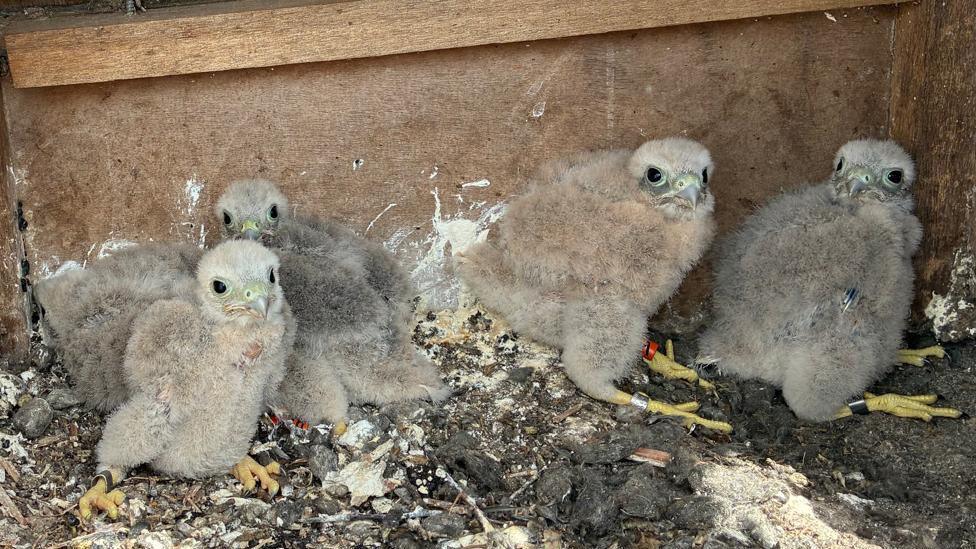
Chicks are tagged, known as ringing, at a young age so they can be monitored
Volunteer Michael Whiteside, who been checking the boxes for 25 years, said new developments on rural sites can impact potential nesting places.
"Any time an old building becomes available, a developer moves in and we've lost that potential breeding for barn owls," he explained.
"We've found it necessary to provide boxes and the population's increased quite dramatically in that period."
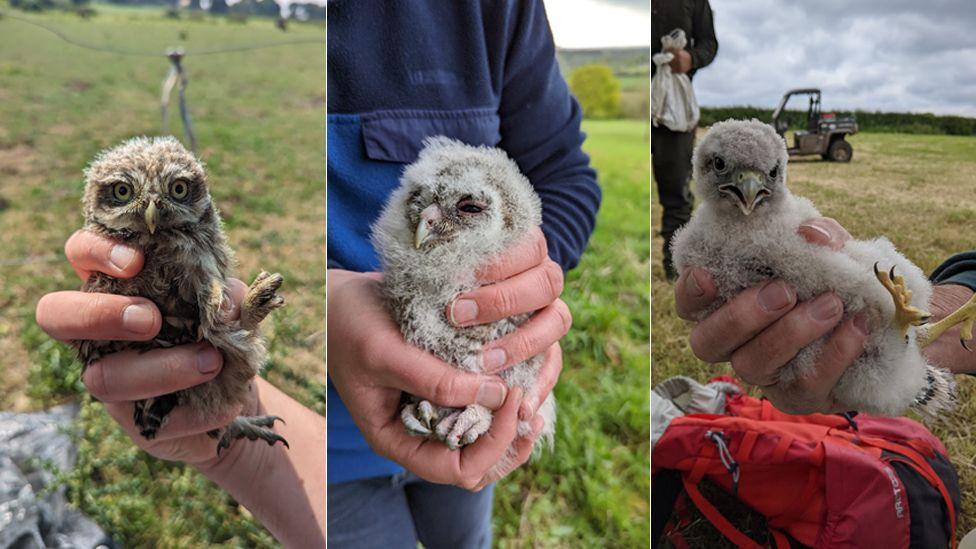
The group also monitor little owls, tawny owls and kestrels
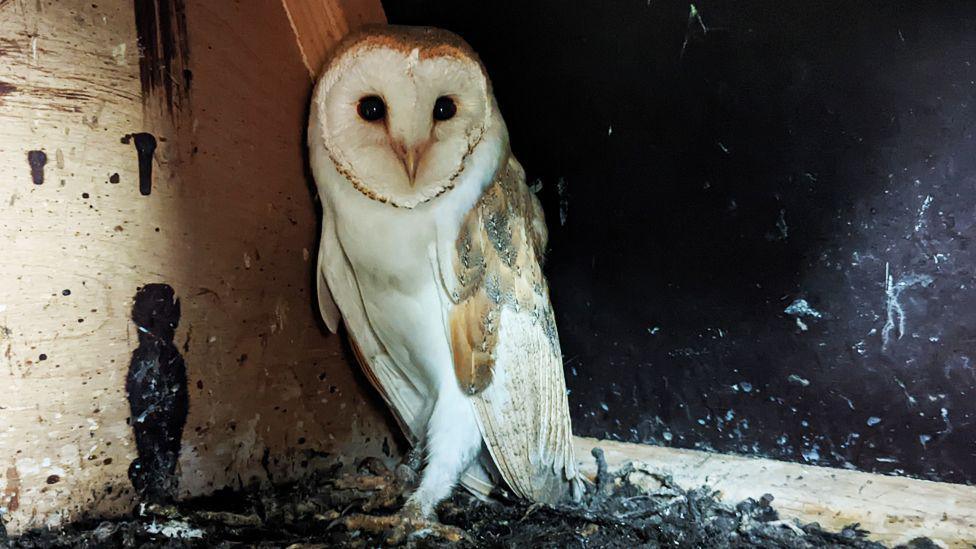
The barn owl's heart-shaped facial disc helps to funnel sound when it is hunting
Chris Whitehurst, who has been a volunteer since 2000, hoped more younger people would be inspired to get involved in the group's conservation efforts.
"We're getting to the point now where most of us are older age, but it is very much Dad's Army on manoeuvres when we go out," he said.
"The presence of grabbing the owls and holding them in your hands, there's nothing quite like seeing a live, wild creature like that."
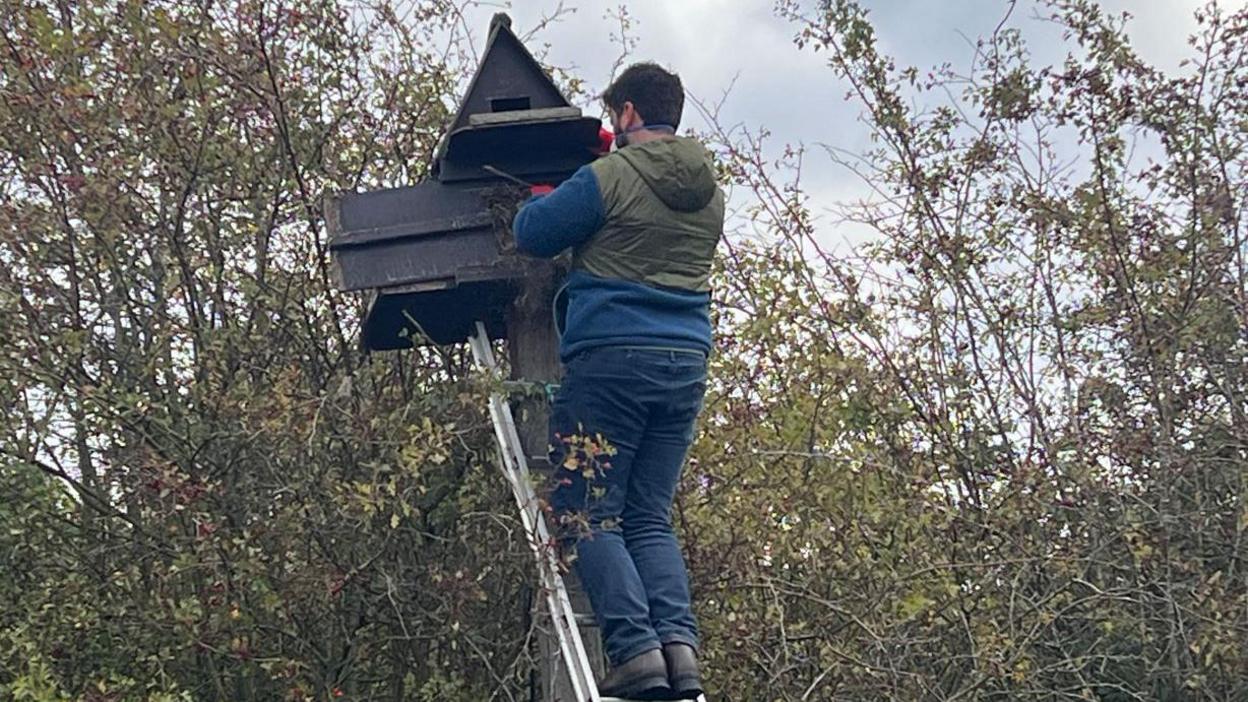
Volunteers install and maintain specially designed nesting boxes
Get in touch
Tell us which stories we should cover in Cheshire
Read more stories from Cheshire on the BBC, watch BBC North West Tonight on BBC iPlayer and follow BBC North West on X, external. You can also send story ideas via Whatsapp to 0808 100 2230.
- Published11 September
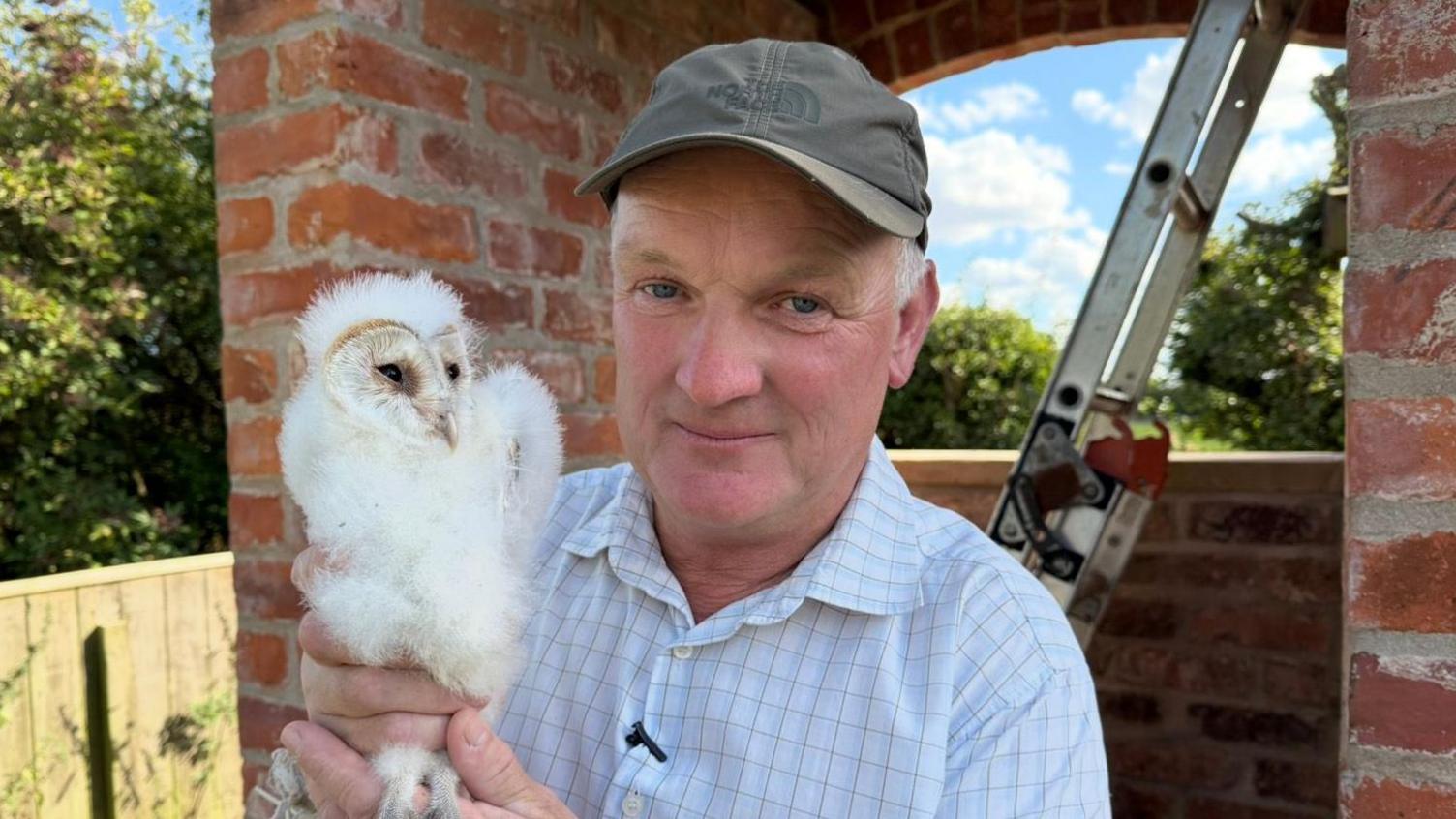
- Published17 July
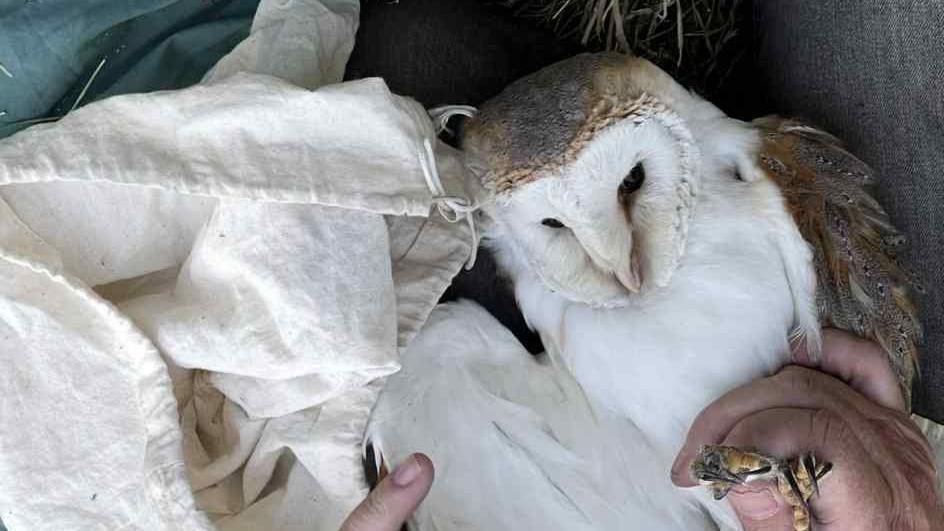
- Published13 July
